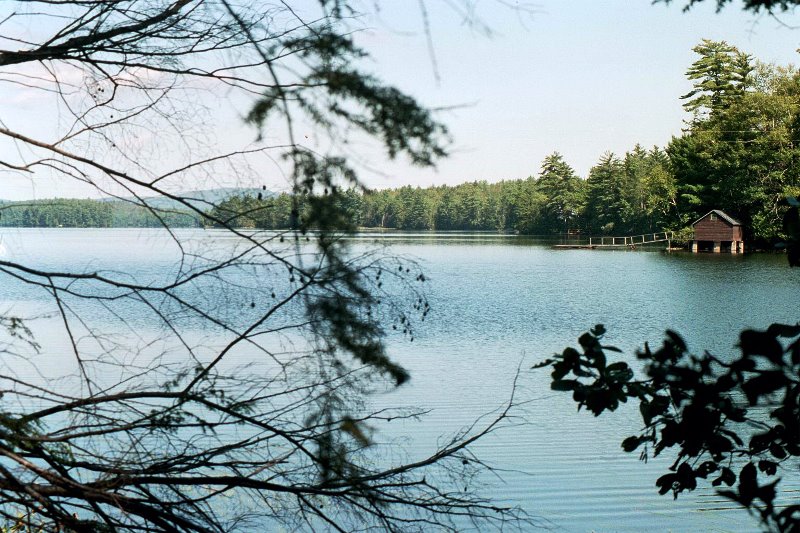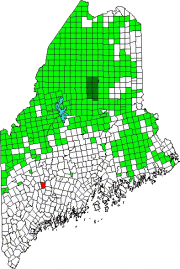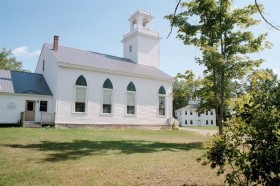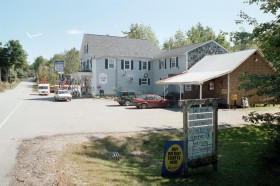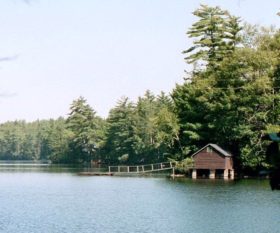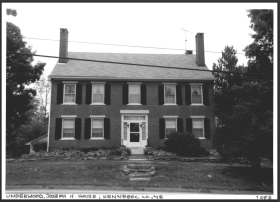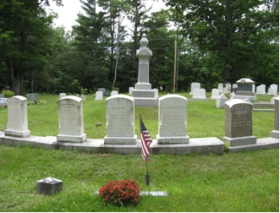| Year | Population |
|---|---|
| 1970 | 447 |
| 1980 | 812 |
| 1990 | 855 |
| 2000 | 1,040 |
| 2010 | 1,140 |
| Geographic Data | |
|---|---|
| N. Latitude | 44:26:23 |
| W. Longitude | 70:03:47 |
| Maine House | District 76 |
| Maine Senate | District 17 |
| Congress | District 2 |
| Area sq. mi. | (total) 31.4 |
| Area sq. mi. | (land) 29.2 |
| Population/sq.mi. | (land) 39.0 |
County: Kennebec
Total=land+water; Land=land only |
|
[FAY-eht] the most westerly town in Kennebec County, was named for the Marquis de Lafayette, the French nobleman who offered his services to the Americans during the Revolution.
Settled permanently beginning in 1781, it was incorporated as a town on February 28, 1795 from the former Sterling (or Starling) Plantation.
Three years before the town was established, in 1792, the Fayette Baptist Church (upper right) was incorporated.
Lafayette Corner (later Fayette Corner) was the business center of the town, lying on a well-traveled route between the Androscoggin and Kennebec rivers.
In the 1880’s the Gazetteer of Maine observed these elements of the local economy:
[The] Dunn Edge Tool Company [does] a large business in the manufacture of axes, scythes, and other cutting implements. [Also] are manufactured long and short lumber, cabinet work, dowels, and boxes and measures. There is some granite in town, also pyritiferous mica-schist*, and slate. The soil is generally good, and the town is noted for its dairy products and its fine woolen sheep.
In addition to Fayette Village, the community has several other settlements at Sanderson Corners, Twelve Corners and North Fayette, all on Maine Route 17. North Fayette sits on the modest 114 acre Tilton Pond. A “carry in” boat launch is located on the southeast shore off Route 17.
North Fayette also hosts the historic Starling Grange. (See below)
The town has substantial frontage on several large lakes and ponds: David, Tilton and Parker ponds in the northeast, Echo Lake and Lovejoy Pond in the east, and Mosher Pond in the northwest near Twelve Corners.
In the 1880’s, Fayette supported nine public schoolhouses with a population of 765 and a formation containing quartz, mica, and pyrite (a common mineral also known as “fool’s gold”).
Form of Government: Town Meeting-Select Board-Manager.
Additional resources
Dalton, Pete. They Heard the Call: Contributions of Five Maine Towns in the Civil War. Union, Me. Union Pub. Co. 1995.
*Maine. Historic Preservation Commission. Augusta, Me. Text and photos from National Register of Historic Places.
Sins of our Mothers [moving image recording] The Story of Emeline. Alexandria, Va. PBS. 1988. (Cataloger Note: Presents the true story of Emeline Gurney, on which Judith Rossner’s novel Emmeline is based. At the age of 13, Emeline was sent by her parents from Fayette, Maine to live and work in the mills at Lowell, Mass. Within a year she had been seduced, given birth to an illegitimate son, given him to strangers and returned to her parents’ home in Maine. In a tragic turn of events, many years later she marries a man from Massachusetts, who is later revealed to be her illegitimate son. Using town and church records and interviews with townspeople who knew her, the program reveals attitudes about community, morality and social conditions in 19th century New England.)
“Tilton Pond.” Maine Department of Inland Fisheries and Wildlife. https://www.maine.gov/ifw/docs/lake-survey-maps/kennebec/tilton_pond.pdf (accessed February 19, 2019)
Underwood, Joseph H. History of Fayette. Edited and completed by Russell C. Tuck. Augusta, Me.. C.E. Nash, printers. 1956.
Varney, George J. A Gazetteer of the State of Maine. 1881. p. 232.
National Register of Historic Places – Listings
Photos, and edited text are from nominations to the National Register of Historic Places researched by Maine. Historic Preservation Commission.
Full text and photos are at https://npgallery.nps.gov/nrhp
Joseph P. Underwood House
Underwood House
Underwood House in Fayette Mills, the largest and most architecturally prominent house in town, is a building that reflects the achievements and status of one of this town’s most successful merchants, farmers and politicians. Built in 1837, the large brick house and ell was Underwood’s third home in the town to which he had moved thirty years earlier. Over the next thirty years he was to expand his interests to include establishing one of the earliest and best herds of Hereford cattle in the state.
Underwood had established a successful store, invested in many local industries and served as an elected official in a variety of local and state offices. He was elected to the Maine House in 1833, 1835 and 1838. When Governor Kent was elected in 1841, Underwood was appointed as a member of the Governor’s Council. [Christi Mitchell photo]
Kent Burying Ground
The Kent Burying Ground is a modest sized, neighborhood oriented circular cemetery located at Fayette Corners. Laid out after 1880, the cemetery is nestled in the corner formed by the intersections of Fayette Corners Road and the Oak Hill Road. Although this section of town once contained many farms, schools and civic buildings, it is currently a crossroads featuring widely dispersed farms and homes. The Fayette Corner Baptist Church, which has its own burial yard, is approximately three-quarters of a mile away and an overgrown frame, one-room schoolhouse is located about half a mile to the west. The entry to the cemetery fronts on Fayette Corners Road and faces northwest. [Andrew D. Sell photo]
Starling Grange (Former)
Now known as Starling Hall, the former Grange is important in the social history of Fayette as a fraternal organization and as a gathering place for local entertainment and recreation. Built in 1879 by members of the recently formed Starling Grange # 156, the building soon proved too small to adequately host events and was enlarged in 1900. With a first floor dining room and kitchen and a spacious hall and stage on the second floor, this ordinary wood frame building supported Grange functions and could host public events from town meetings to school graduations. It also features a basement level stable to house members’ horses during meetings, and a two story outhouse.
Throughout the 19th and first half of the 20th centuries the Grange, or Patrons of Husbandry, was an important social organization with an emphasis on agricultural education and progressive community and social activities. Its influence was widespread.
588 Granges were established in Maine between 1873 and 1985, but the focus of each Grange was on assisting the local communities. The Grange owned the hall until 1987 when it was sold to the Town of Fayette.
[This image was originally posted to Flickr by bronayur at https://flickr.com/photos/54137788@N00/320943870. It was reviewed on by FlickreviewR and was confirmed to be licensed under the terms of the cc-by-sa-2.0. [It is in the public domain.]


